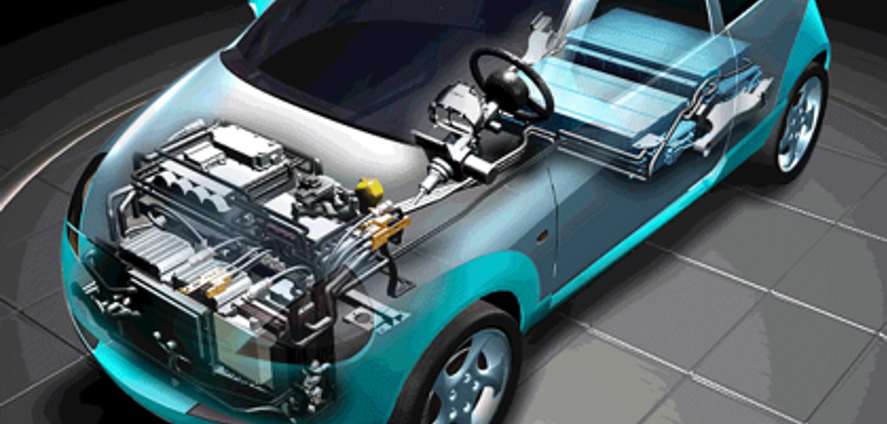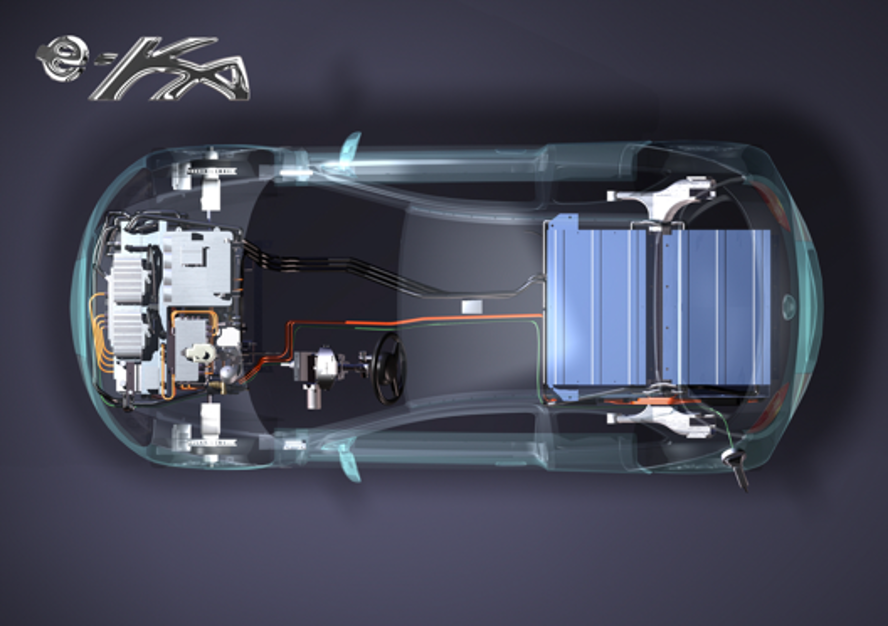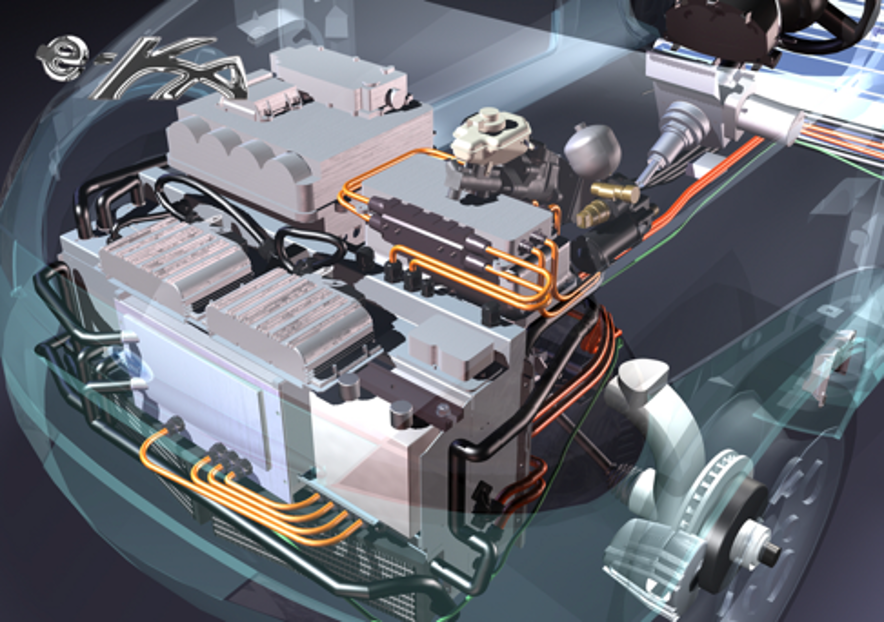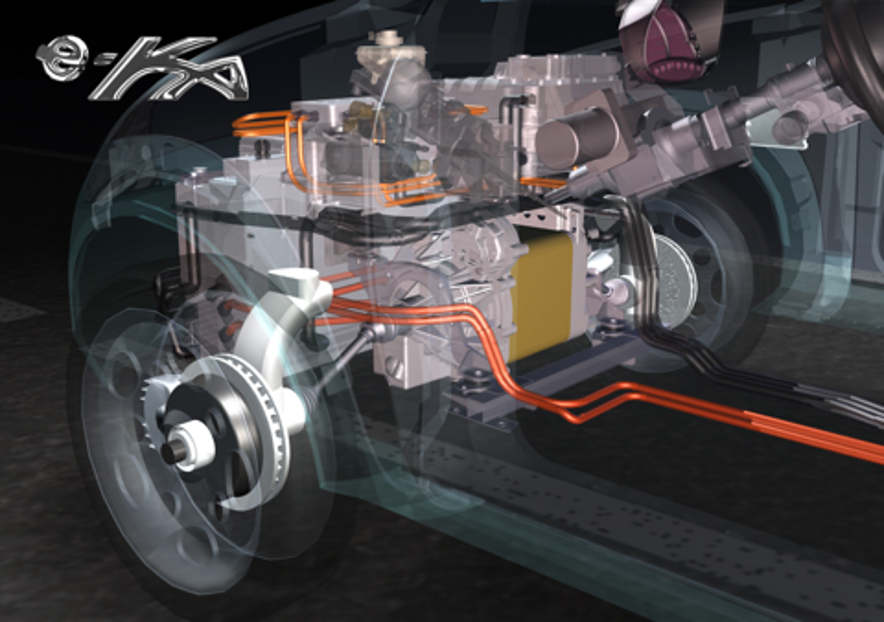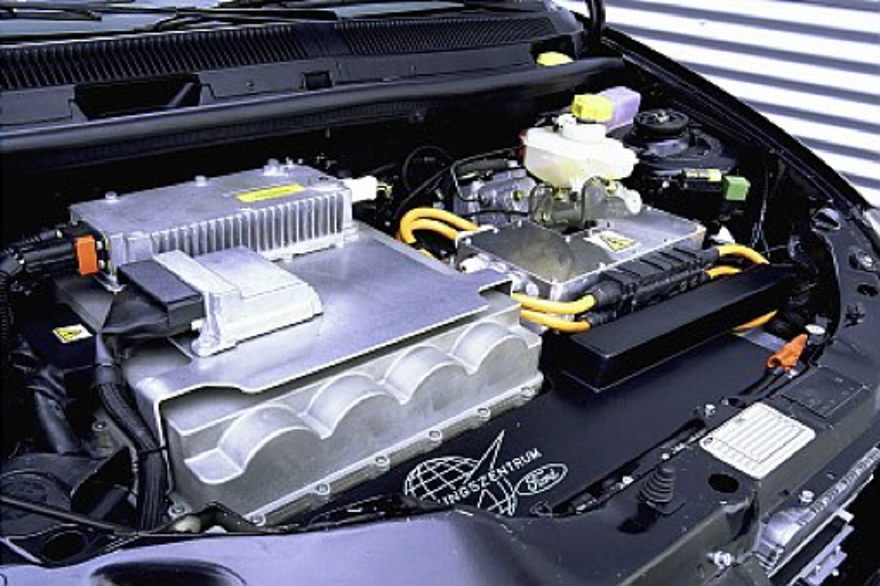Back in the 1990s, automotive lithium-ion battery technology was still very much in its infancy. Toward the end of the decade, major advances in the tech were driven by demands in the portable electronics market, which fed into the development of vehicle batteries and later enabled practical applications in the sector.
Convinced of the tech’s potential in electrifying vehicle powertrains, in 1999 a team at the Ford Research and Innovation Center in Aachen, Germany, built and tested an electric prototype of the Ka. The Blue Oval went on to launch a Ford Ranger with a NiMe hybrid battery at the end of the 1990s, a Ford Escape Hybrid in 2004 and a Ford Focus Electric with a lithium-ion battery in 2010.
Peter Schmitz, who was working as a technical specialist as part of the alternative powertrains team, recalls his time spent developing this innovative Ford e-Ka project that became a foundation of the company’s electric powertrain development.
Please tell us how the project started.
In mid-1998, we sat down with the directors of Ford and discussed the proposed electric vehicle. Toward the end of the year, with help from students at the University of Aachen, a pre-study was conducted that involved finding out what electric vehicles and other prototypes were being demonstrated at the time, the performance data from these, and the expected range and component lifetimes. Our task at the research center was to prove that Ford of Europe was able to build the best electric vehicle in its class. It was to be an electrified version of the Ford Ka, so we called it the e-Ka, and just six months later, in 1999, we started building the two vehicles.
Did you bring any partners on board?
Several third-party engineering companies were involved. Packaging of the three battery trays and subsequent battery developments were carried out in collaboration with French battery supplier Saft, so we often had to travel back and forth between Bordeaux and Aachen. For the e-Ka project we had mechanical support, integration support and an in-house team focused on software design. The electronic design was also done by us. This involved writing software codes for the central vehicle controller, which we typically did at night because back then the research center was open 24 hours a day, seven days a week. Very often we would get takeaway pizza delivered to us!
What were the key challenges of the project?
Thermal management of the vehicle was troublesome in terms of the cooling system as we had to figure out what we needed in terms of inlet and outlet temperatures. We didn’t design [this system], so configuring the liquid-cooled battery, the motor and the inverter was all done by trial and error in the workshop. We had piles of components on the floor, and we spent a lot of time playing around with tubes and pumps to get the right flow in the system. Everything else on the e-Ka was simulated and calculated, but not this.
Another issue was trying to keep the original interior and not compromise on the baggage space too much. Three battery trays were required to fit all the batteries into the vehicle, so we ended up splitting one of the trays into two – we had one on either side of the rear axle, and a third in the front alongside an inverter and the electric motor. It all worked, but by being packaged in front of the transaxle I’m sure the crash capability of the e-Ka would not be up to today’s standards.
Alongside this we integrated a Bluetooth connection into the radio, which by today’s standards is normal, but in 2000 it was a complicated job to get this working. We integrated a microphone in the cabin, on the roof at the front, that connected to the radio so you could make phone calls.
What is your most memorable moment of the project?
There is one particular situation that I remember very well. It was when the key was turned for the first time to drive the vehicle. Technically, we believed the vehicle to be mechanically and electronically ready. A member of the team turned the key, pushed the gas pedal and the vehicle leapt forward all of a sudden and then turned off. The relays for the battery were disconnected and it was a simple calibration issue with the gas pedal. Suddenly a very high amount of torque and current had gone from the battery to the electric motor. But after this sudden shock, everyone was cautious of the vehicle’s behavior. After that it took us just under a week to recalibrate and make the vehicle driveable.
What was the vehicle’s range and charging capability?
The e-Ka had two charging options: a three-phase charger and a single-phase regular plug like those you would find at home. There were some three-phase connections in Germany, but without charging stations like today, we had to use a regular plug most of the time.
We put the vehicle through NEDC testing and it managed a range of 180km. We also carried out some real-world tests as part of which a couple of colleagues took the cars home and to other places such as Cologne. Under these mixed driving conditions the range was 150km.
Alongside this we started long-term performance testing considering also cold-climate scenarios. We gathered mileage under real-world conditions and checked the capacity of the vehicle’s battery every 20,000km. After two checks we hardly saw any drop in performance.
Unfortunately, for budget reasons, we then had to finalize the project. If we had been able to continue testing, I think we would have made discoveries [about the technology] much sooner, but it took us a couple more years to build on that knowledge and record data from other vehicles.
Was any of the technology taken forward and used on other Ford vehicles?
Though the powertrain’s design was not carried over into any specific products, we demonstrated the feasibility and capability of the technology. Elements of the electric system comprising the three battery trays were put into use in a Ford Focus but with two battery trays.
Smaller aspects of the e-Ka were taken forward, such as the electric power steering, which was originally hydraulic, and is today standard. This was cutting-edge at the time and introduced key design aspects that were later taken into series production.
I believe the design of the E-Ka was impressive considering the short timeframe [it was developed in], but I think as a company we could have built on our knowledge and drawn more conclusions from the project than we did.
Ford e-Ka Vehicle Specs:
| Base Vehicle | Ford e-Ka |
| Weight | 1,134kg |
| Top speed | 130km/h |
| 0-100km/h | 12.7 seconds |
| Range: NEDC / real world | 180km / ~150km |
| Battery type | Li-on |
| Battery energy | 28kW/h |
| Battery weight | 280kg |
Peter Schmitz is manager of power supply and energy management at Ford Research & Advanced Engineering


